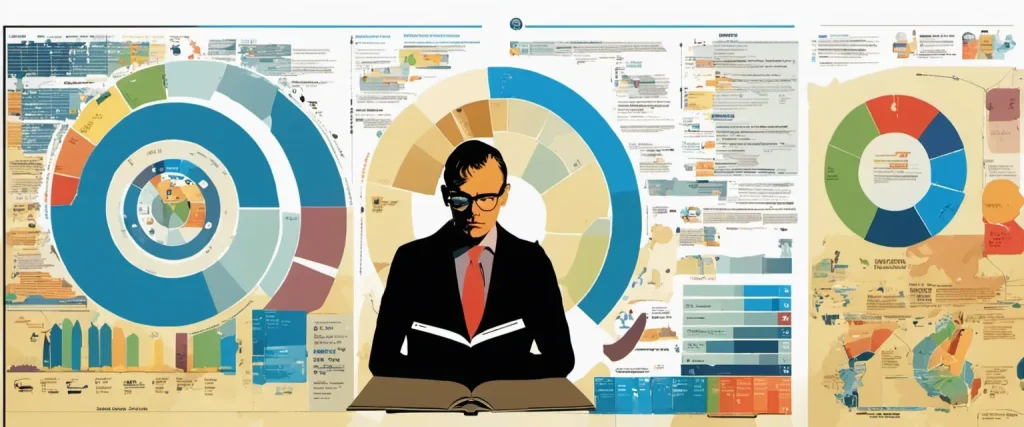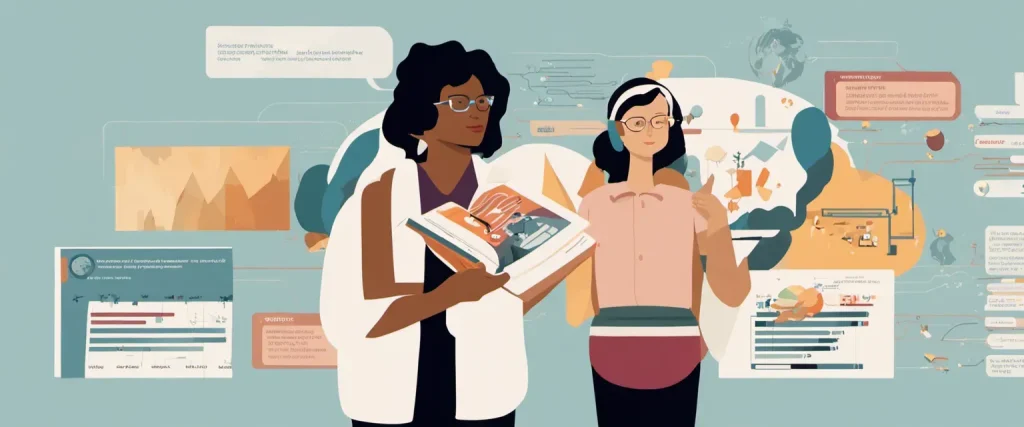In “Factfulness,” renowned Swedish physician and statistician Hans Rosling aims to challenge our perception of the world and shed light on the true state of humanity. Filled with eye-opening facts and compelling anecdotes, Rosling unlocks the power of data to dismantle common misconceptions, exposing a world that is not as desperate as we often imagine. With a refreshing and thought-provoking approach, he encourages readers to embrace a more fact-based worldview, ultimately advocating for a more informed and resilient society.
Chapter 1: The Gap Instinct
Chapter 1: The Gap Instinct of the book “Factfulness” by Hans Rosling introduces the concept that our worldview is often distorted by a common human bias known as the “gap instinct.” Rosling argues that most people have a tendency to divide the world into two distinct groups: developed and developing nations, rich and poor, or successful and unsuccessful. These binary divisions oversimplify complex global realities and prevent us from understanding the progress that has been made.
The author believes that this gap instinct is fueled by a diet of negative news and an outdated understanding of the world. Rosling presents a series of multiple-choice questions to reveal the extent of our knowledge about global trends. Surprisingly, data shows that most people, including experts, perform worse than random guessing. This lack of understanding results in a distorted worldview, often painting a bleaker picture than reality.
Rosling argues that the gap instinct blinds us to the significant progress made in health, education, and living conditions around the world. By solely focusing on negative aspects, we fail to acknowledge that the majority of people are now living in middle-income countries, with reduced poverty and better access to education and healthcare. The author emphasizes the importance of using up-to-date data and abandoning our preconceived notions of the world.
In conclusion, Chapter 1 highlights the gap instinct as a cognitive bias that distorts our understanding of the world’s progress. Rosling urges readers to reassess their worldview and embrace a fact-based perspective on global development. By challenging our assumptions and seeking accurate information, we can overcome the gap instinct and gain a more accurate understanding of the world.
Chapter 2: The Negativity Instinct
Chapter 2 of “Factfulness” by Hans Rosling, titled “The Negativity Instinct,” delves into humanity’s natural predisposition towards negative thinking. Rosling argues that our tendency to focus on negative news and disregard positive developments has a significant impact on our worldview.
The chapter begins by explaining the “gap instinct,” which arises when interpreting the world as divided into separate groups with conflicting interests. Rosling suggests that this instinct is one of the main drivers behind our negative perceptions. He emphasizes that classifying the world into binary categories oversimplifies complex issues and distorts our understanding of reality.
Rosling then introduces the concept of the “negativity instinct,” which refers to our instinctive response to magnify and remember negative information more readily than positive information. He explains that this stems from our evolutionary past, where focusing on negative threats ensured survival. However, in today’s world, this instinct clouds our judgment, leading to a skewed perception of global progress.
To challenge this instinct, Rosling provides numerous examples of the remarkable improvements humanity has achieved worldwide. He highlights how poverty rates have decreased, life expectancy has increased, and child mortality has declined significantly over the past few decades. Despite these positive trends, many people remain unaware of this progress due to the relentless focus on negative news.
Ultimately, Rosling emphasizes the importance of recognizing our negativity instinct and consciously seeking out a more balanced understanding of the world. By acknowledging the progress achieved and the potential for further improvements, we can shatter our preconceived notions and develop a fact-based worldview.
Chapter 3: The Straight Line Instinct
Chapter 3: The Straight Line Instinct of the book “Factfulness” by Hans Rosling explores our tendency to simplify complex situations by assuming they will continue in a straight line. This instinct often leads us to make incorrect assumptions and predictions about the world.
The chapter begins with Rosling recounting his experience with students who, despite being intelligent and well-informed, still held misconceptions about global population growth. Many assumed that the population would continue to grow exponentially because that’s what they were taught in school, overlooking the fact that the growth rate is actually declining. This misconception reveals the prevalence of our straight-line instinct.
Rosling explains that our straight-line thinking stems from the way we perceive patterns and systems. Human brains are wired to find linear patterns, as they require the least cognitive effort. However, in reality, most systems and trends follow non-linear patterns, with ups and downs, plateaus, and occasional radical shifts. Failing to recognize this leads to erroneous assumptions and predictions.
The chapter further emphasizes the importance of recognizing the various factors influencing trends and the need to evaluate historical context rather than relying on straight-line thinking. Rosling highlights examples such as global population growth, income distribution, and child mortality rates to illustrate how non-linear patterns better explain these phenomena. By adopting a more nuanced understanding of trends, we can avoid oversimplifications and make more accurate judgments about the world.
In conclusion, Chapter 3 of “Factfulness” exposes our unconscious tendency to rely on straight-line thinking when considering global issues. It reminds readers of the importance of questioning assumptions and seeking a more comprehensive understanding of trends to avoid erroneous predictions and biases.
Chapter 4: The Fear Instinct

Chapter 4: The Fear Instinct of the book “Factfulness” by Hans Rosling explores the human tendency to prioritize and exaggerate negative information, leading to a distorted view of the world. Rosling introduces the concept of the “fear instinct,” which he believes is a product of evolution and has been especially pronounced in our modern society.
Rosling argues that humans are hardwired to pay more attention to threats and dangers rather than positive news. This fear instinct is an evolutionary survival mechanism that helped early humans avoid potential risks and dangers. However, in today’s world, this instinct has become problematic as it leads to negative biases and misunderstandings.
The fear instinct manifests itself in many ways, such as the media’s focus on tragic events, the public’s fascination with worst-case scenarios, and politicians exploiting people’s fears for their own gain. These fear-based narratives often overshadow the positive developments and progress being made globally.
To counteract the fear instinct, Rosling suggests that it is important to rely on data-driven information and understand the scale of various global issues. By looking at statistics and facts, we can gain a more accurate and less fearful perspective on global trends. Rosling encourages readers to embrace a fact-based worldview and to challenge their own preconceived notions.
In conclusion, Chapter 4 of “Factfulness” highlights the impact of the fear instinct on our perception of the world. Rosling emphasizes the need to counteract this instinct by seeking out balanced and accurate information, which can help us have a more nuanced understanding of the global reality.
Chapter 5: The Size Instinct
Chapter 5 of “Factfulness” by Hans Rosling, titled “The Size Instinct,” delves into our tendency to misjudge the importance or impact of something based purely on its size. Rosling uses numerous examples to demonstrate how our size instincts often lead us to incorrect assumptions and conclusions.
Firstly, Rosling emphasizes that the size of a trend or problem does not necessarily correlate with its significance. He describes instances where attention is disproportionately given to small problems, such as airplane crashes, while much larger problems, such as traffic accidents, receive little attention despite causing more fatalities.
Moreover, the author highlights the tendency to think of a country or region as representative of the whole when in fact it may be an outlier within a larger context. For example, Rosling explains how many people believe Africa as a whole is perpetually poor and underdeveloped, when in reality it is a diverse continent with countries at different stages of development. This misconception arises because we often focus on smaller, poorer countries within Africa and neglect to consider the progress made in other countries within the continent.
Furthermore, Rosling challenges the assumption that the size of a country or population determines its importance or impact. He argues that significance should be attributed based on factors such as political stability, economic power, technological advancements, and global influence, rather than just size. By debunking the size instinct, Rosling encourages readers to think critically and look beyond the surface to understand the true nature and importance of various issues, trends, and regions.
In conclusion, Chapter 5 of “Factfulness” highlights the pitfalls of our size instincts, cautioning against making assumptions or drawing conclusions based solely on size. With real-world examples, Rosling challenges our preconceived notions and encourages us to judge significance based on a broader and more nuanced perspective.
Chapter 6: The Generalization Instinct
Chapter 6: The Generalization Instinct of “Factfulness” by Hans Rosling explores the cognitive bias of generalization that prevents us from accurately perceiving the world as it truly is. Rosling argues that humans have a tendency to oversimplify complex issues and rely on broad stereotypes and assumptions when forming judgments and beliefs. This instinctive generalization stems from our evolutionary past, as it helped our ancestors survive in a dangerous and unpredictable environment.
Rosling highlights three main challenges that contribute to our generalization instinct. Firstly, he emphasizes the importance of recognizing the vast diversity within groups. We often overlook the individual differences that exist within categories such as countries, cultures, or religions, and make assumptions based on limited information or outdated knowledge. Secondly, our tendency to categorize information into binary opposites, seeing the world in terms of “us versus them” or “developed versus developing,” leads to a distorted understanding of global progress. This oversimplification fails to acknowledge the varied progress made by different nations in different areas.
Lastly, Rosling addresses the misleading power of narratives, anecdotes, and media coverage. These sources often portray extreme or exceptional cases, leading us to generalize and make judgments based on isolated incidents rather than overall trends. Rosling emphasizes the importance of analyzing statistical data and avoiding the seductive allure of dramatic stories that skew our perception of reality.
To counter the generalization instinct, Rosling encourages a fact-based and nuanced approach to understanding the world. He argues for the active involvement of critical thinking, curiosity, and constant updating of knowledge to combat our instinctive tendency to generalize. By developing a more accurate perception of the world, we can make better decisions and contribute to a more informed and compassionate global society.
Chapter 7: The Destiny Instinct
Chapter 7 of “Factfulness” by Hans Rosling is titled “The Destiny Instinct.” In this chapter, Rosling discusses the idea that certain countries or regions are destined for greatness or failure, based on their history or culture. He argues that this instinct for destiny leads to biased thinking and prevents us from seeing the reality of the world.
Rosling begins by highlighting how many people believe that Western countries are bound to succeed due to their heritage and systems, while African or Asian countries are doomed to fail due to their poverty or corruption. He emphasizes that such mindset fails to take into account the diversity and progress happening in all parts of the world.
The author presents data and examples to challenge this destiny instinct. He points out that many countries have lifted themselves out of poverty and achieved substantial progress despite their challenging circumstances. Countries like South Korea, Singapore, and Botswana are cited as examples of how development can occur even in difficult contexts.
Rosling also highlights the importance of examining data from a global perspective. He explains that when we compare countries over time, we see that many have made significant progress, even if they started from a disadvantaged position. By focusing solely on present conditions, we fall into the trap of assuming that current perceptions are fixed and will persist.
Ultimately, Rosling advocates for embracing a fact-based worldview, where we challenge our assumptions about destiny and acknowledge the complexity and potential for progress in all countries. By recognizing this, we can avoid perpetuating stereotypes and have a more accurate understanding of the world.

Chapter 8: Factfulness in Practice
In Chapter 8 of “Factfulness” by Hans Rosling, titled “Factfulness in Practice,” the author delves into practical ways individuals and societies can apply factfulness to make better decisions and dispel misconceptions about the world.
Rosling emphasizes the importance of critical thinking and questioning assumptions to gain a more accurate understanding of the world. He discusses the role of data and highlights the need to examine statistics with a critical eye, considering sources and biases. Rosling suggests employing the “rule of thumb,” where one looks for the best approximation while considering context, as a practical tool to assess data.
Furthermore, Rosling argues for the adoption of a fact-based worldview and highlights four dimensions of factfulness: recognizing the prevalence of progress, understanding the influence of activists and journalists, embracing complexity, and acknowledging your own biases. He emphasizes the need to update our knowledge and avoid outdated stereotypes by keeping up with the latest data and developments.
Rosling also emphasizes the necessity of making decisions based on proportions rather than absolute numbers. By comparing different populations using proportional measures, we can gain a clearer perspective on issues such as poverty, education, and health.
Additionally, the author encourages readers to communicate facts effectively, understanding that emotions and narratives often have more impact than data alone. By employing relatable stories, metaphors, and vivid visuals, people can convey facts in a compelling manner and combat misinformation or misconceptions effectively.
In conclusion, Chapter 8 of “Factfulness” provides practical strategies for adopting a fact-based worldview. By critically assessing data, updating knowledge, analyzing proportions, and effectively communicating facts, individuals can make more informed decisions and contribute to a more accurate understanding of the world.
After Reading
In conclusion, “Factfulness” by Hans Rosling serves as an enlightening and thought-provoking exploration of the current state of the world. Through his captivating storytelling and data-driven approach, Rosling challenges common misconceptions and highlights the progress and positive trends that often go unnoticed. By emphasizing the importance of critical thinking and urging readers to rely on accurate data, the author encourages a more fact-based worldview. Ultimately, “Factfulness” provides a refreshing perspective that inspires hope and optimism for a future where accurate information and understanding can lead to a more informed and informed society.
1. Thinking, Fast and Slow” by Daniel Kahneman: In this book, Kahneman explores the two systems that dictate how we think and make decisions. It delves into the biases and heuristics that influence our choices, shedding light on the flaws in our decision-making processes. This eye-opening read will challenge your perceptions and help you become a more informed and rational thinker.
2. Nudge: Improving Decisions About Health, Wealth, and Happiness” by Richard H. Thaler and Cass R. Sunstein: Thaler and Sunstein examine the concept of choice architecture, which explores how small changes in the way choices are presented can profoundly impact decision-making. This book introduces the concept of nudging and presents practical examples of how it can be used to improve decision outcomes in various spheres of life.
3. Predictably Irrational: The Hidden Forces That Shape Our Decisions” by Dan Ariely: Ariely investigates the irrationalities that influence our decision-making processes. By conducting numerous experiments and presenting captivating examples, he reveals the complex interplay between emotions, social norms, and cognitive biases. This insightful book offers a fresh perspective on our ability to make rational decisions and provides valuable insights into human behavior.
4. “Superforecasting: The Art and Science of Prediction” by Philip E. Tetlock and Dan Gardner: If you are interested in enhancing your ability to predict future events accurately, this book is a must-read. Tetlock and Gardner explore the methods and strategies adopted by superforecasters – individuals with an uncanny knack for making precise predictions. Drawing on extensive research, they reveal the key factors that contribute to accurate forecasting and offer practical tips to improve your own forecasting abilities.
5. “Thinking in Bets: Making Smarter Decisions When You Don’t Have All the Facts” by Annie Duke: In this insightful book, Duke explores decision-making through the lens of poker, which is essentially a game of uncertain information. By examining how professional poker players handle uncertainty and make high-stakes decisions, she highlights the value of probabilistic thinking, embracing uncertainty, and recognizing the difference between good decisions and good outcomes. This engaging read equips readers with practical tools to make better decisions in an unpredictable world.
These five books, along with “The Undoing Project,” “Sources of Power,” and “The Black Swan,” will provide you with a comprehensive understanding of decision-making, human biases, and the art of prediction.



